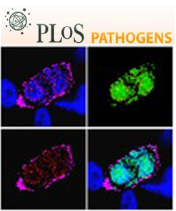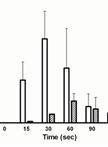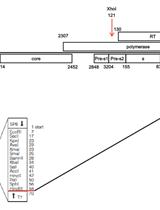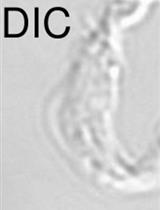- EN - English
- CN - 中文
Fitness Measurements of Evolved Esherichia coli
进化后的大肠杆菌的适应性测定
发布: 2014年09月05日第4卷第17期 DOI: 10.21769/BioProtoc.1228 浏览次数: 12540
Abstract
Bacteria can adapt very rapidly to novel selective pressures. In the transition from commensalism to pathogenicity bacteria have to face and adapt to the host immune system. Specifically, the antagonistic interaction imposed by one of the first line of defense of innate immunity cells, macrophages, on commensal bacteria, such as Escherichia coli (E. coli), can lead to its rapid adaptation. Such adaptation is characterized by the emergence of clones with mutations that allow them to better escape macrophage phagocytosis. Here, we describe how to quantify the amount of fitness increase of bacterial clones that evolved under the constant selective pressure of macrophages, from a murine cell line RAW 264.7. The most widely used assay for measuring fitness changes along an evolutionary laboratory experiment is a competitive fitness assay. This assay consists of determining how fast an evolved strain outcompetes the ancestral in a competition where each starts at equal frequency. The strains compete in the same environment of the evolution experiment and if the evolved strain has acquired strong beneficial mutations it will become significantly overrepresented in repeated competitive fitness assays.
Keywords: Experimental evolution (实验性的进化)Materials and Reagents
- RAW 264.7 murine macrophage cell line (MΦs)
- E. coli strains, marked with constitutive expression of yellow (YFP) and cyan (CFP) fluorescent proteins (e.g. E. coli- MC4100, galK::CFP/YFP, AmpRStrepR)
- RPMI media1640 (Life Technologies, Gibco®, catalog number: 11875-093 )
- 2-mercaptoethanol solution (Life Technologies, InvitrogenTM, catalog number: 31350-010 )
- 1 M HEPES buffer (Life Technologies, InvitrogenTM, catalog number: 15630-056 )
- 100 mM sodium pyruvate (Life Technologies, InvitrogenTM, catalog number: 11360-039 )
- Heat-inactivated fetal bovine serum (FBS)
- 200 mM L-glutamine (Life Technologies, Gibco®, catalog number: 25030-081 )
- 10,000 U/ml penicillin/streptomycin (Life Technologies, Gibco®, catalog number: 15140-122 )
- Streptomycin sulfate salt (Sigma-Aldrich, catalog number: S9137 )
- 50 mg/ml Gentamycin solution (Sigma-Aldrich, catalog number: G1397 )
- 1x Phosphate-buffered saline (PBS)
- Trypan blue solution (Sigma-Aldrich, catalog number: T8154 )
- CpG-ODN -1826 (Sigma-Aldrich) (5´-TCCATGACGTTCCTGACGTT-3´)
- RPMI-complete media (see Recipes)
- RPMI-strep media (see Recipes)
Equipment
- 37 °C, 5% CO2 cell culture incubator
- Microscope
- Centrifuge (Sigma-Aldrich, model: 4K15 with a rotor 11150)
- Neubauer cell counting chamber
- Air flow chamber
- 12-well microtiter plates
- Cell culture flasks (25 cm2 and 75 cm2 growth area)
- 15 ml Falcons tubes
- Cell scrapers
- 2 μm size beads (Sphero AccuCount Blank Particles)
- Flow cytometer
Procedure
文章信息
版权信息
© 2014 The Authors; exclusive licensee Bio-protocol LLC.
如何引用
Readers should cite both the Bio-protocol article and the original research article where this protocol was used:
- Miskinyte, M. and Gordo, I. (2014). Fitness Measurements of Evolved Esherichia coli. Bio-protocol 4(17): e1228. DOI: 10.21769/BioProtoc.1228.
- Miskinyte, M., Sousa, A., Ramiro, R. S., de Sousa, J. A., Kotlinowski, J., Caramalho, I., Magalhaes, S., Soares, M. P. and Gordo, I. (2013). The genetic basis of Escherichia coli pathoadaptation to macrophages. PLoS Pathog 9(12): e1003802.
分类
微生物学 > 微生物-宿主相互作用 > 细菌
微生物学 > 微生物遗传学 > DNA > DNA 复制
分子生物学 > DNA > 基因分型
您对这篇实验方法有问题吗?
在此处发布您的问题,我们将邀请本文作者来回答。同时,我们会将您的问题发布到Bio-protocol Exchange,以便寻求社区成员的帮助。
Share
Bluesky
X
Copy link













